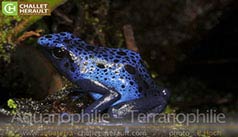

Sky-blue poison frog
(Hyloxalus azureiventris)
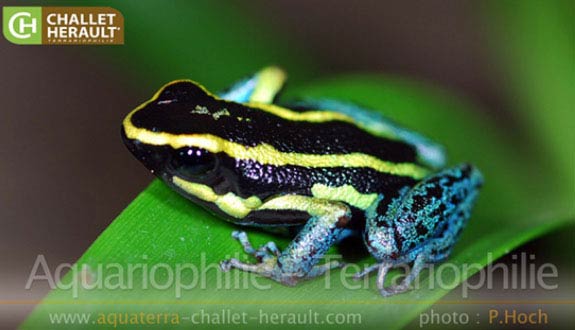
A big thank you to Valentin!
Alternative species (click on the thumbnail to see the card)
Names
Scientific name
Hyloxalus azureiventris
Common name
Sky-blue poison frog
Dendrobate
Origin

Origin: South America (San Martin region - Peru)
Biotope: Amazonian - Tropical Tropical Forest
Dimorphism
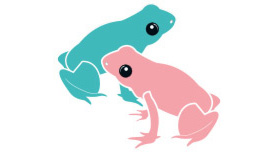
The male is slimmer and smaller than the female. Only the male sings
Group

Dendrobatidae
Length

1 to 3: 45cm or 18"
4 and +: 60cm or 24"
Temperatures

Hot spot: 22/24°C or 72/75°F
Cold point: 22/24°C or 72/75°F
Night: 20/22°C or 68/72°F
Difficulty

Easy
Size
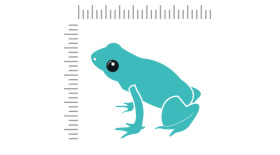
3 cm (1.2")
Longevity
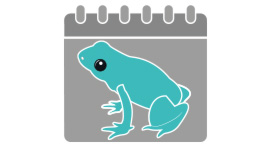
5 to 10 years
Zone
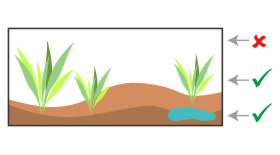
Background and medium
Individuals
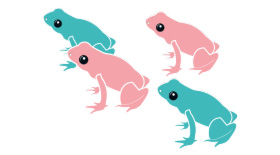
Some individuals
Food
How to feed the Dendrobate?
Food
How to feed the Dendrobate?
This pretty frog is an insectivore. Its diet consists of small living insects: Drosophila, crickets (size: micro), Collembola... To avoid any deficiency, the prey must be supplemented with calcium.
For the distribution of insects, you can make them available to frogs 1 day out of 2. Ideally, place prey in different parts of the paludarium to facilitate their capture by the Dendrobates.
Finally, note that these frogs tend to be obese in captivity. Be careful not to overfeed them.
Behavior
What kind of behavior does the Dendrobate have?
Behavior
What kind of behavior does the Dendrobate have?
Frogs are active during the day (daytime). When they arrive home, they will tend to hide and may seem rather shy, which is normal. Rest assured, as the days go by, they will relax and feel more comfortable in their new environment. They will then show themselves much more and you’ll be able to enjoy it.
Cohabitation
Who can live with the Dendrobate?
Cohabitation
Who can live with the Dendrobate?
Dendrobates live in groups of few individuals. You can compose your group with 1 male for 2 females or 2 males for 3 females.
Note that it is safer to maintain a single species of Dendrobate in your paludarium. Indeed, even if this is possible under certain conditions, the cohabitation of several species of frogs remains rather delicate because they are quite territorial. Do avoid then!
Breeding
How to breed the Dendrobate?
Breeding
How to breed the Dendrobate?
By the age of 16/18 months, the Dendrobates will be able to breed.
The male calls the female by a long and particular cry. This love parade can last from 2 to 3 hours. A few hours after this parade and mating, the female lays 2 to 10 eggs on a wet surface (like moss for example). You will observe that each egg is contained in a transparent gelatinous pouch.
If you want to raise tadpoles, wait 48 hours before removing the eggs from the paludarium. Then put them in a box containing a little water. You will first prepare this water by mixing mineral water, dried alder fruits and dried Catappa leaves. This acidic water will naturally prevent rotting eggs. The temperature should be 23 to 25°C (73 to 77°F) inside the box.
The tadpole will gradually form and then it will pierce its envelope. Leave it the envelope that it will consume: it is very rich and will serve it food in the first days!
Once all eggs hatch, each tadpole will be isolated in an individual box or pot to prevent some from being killed.
Young tadpoles will be able to eat chopped fish flakes, spirulina... To encourage their growth, feed them well. On the other hand, it involves changing their water quite regularly (by the same preparation of acidic water).
At the end of their development, their members will start growing out. You can then lower the water level gradually to allow the passage from «fish» to frog.
Its paludarium
Which paludarium for the Dendrobate?
Its paludarium
Which paludarium for the Dendrobate?
Natural vegetation will be imperative (no plastic plant) for a paludarium containing frogs. Epiphytic-type plants (orchids, bromeliads, etc.), ferns, ficus or philodendrons are some examples of plant species very well adapted to a paludarium. Do not hesitate to plant densely.
The substrate may be composed of coconut fiber or peat and a light layer of moss or sphagnum. You can also add clay balls, especially if the paludarium is planted.
Dendrobates are semi-arboreal animals. They will need some support to climb. Plan on roots or cork bark to satisfy this instinct. Many hiding places are also essential for their well-being (hollow coconut for example). Finally, put at their disposal a small cup of shallow water (Dendrobates are not very good swimmers, they could drown if they do not have foot!). The cup water should be changed almost every day.
The environment will have to be constantly wet. For this, install an automatic misting system. A less expensive solution but also more restrictive is to perform yourself misting by manual sprays twice a day. Given this constant humidity, make sure the paludarium is well ventilated to avoid bacteria and mold.
Lightning side, choose a good neon UVA or horticultural tube. Schedule a day/night cycle from 10 to 12 hours for good plant growth.
Finally, to maintain a temperature around 22/24°C (71 to 75°F), install a carpet or heating cables of low power (avoid spots that dry very quickly ambient air, which instead must remain wet).
Good To know
Find all additional information!
Good To know
Find all additional information!
In general, handling frogs is to be avoided. It should only be performed in case of extreme necessity. Wash your hands thoroughly before and after each handling.
In the wild, Dendrobates are toxic animals! This property is due to their diet. Rest assured, in captivity, they do not pose a risk because they lose their poison (not finding the food necessary for its manufacture).
There are several subspecies (colours change with localities).
Below is an illustration of the main colours of the commercialized Dendroabtes, as well as the other most common species of Dendrobates:
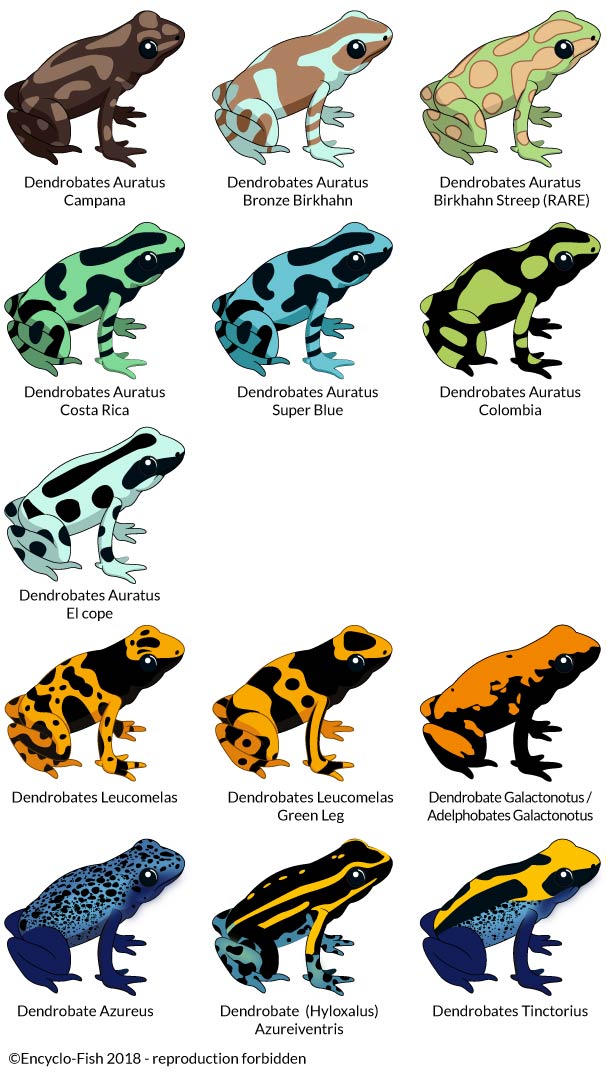

Yours photos!
Comments
Sort by:
Please login to post comments
